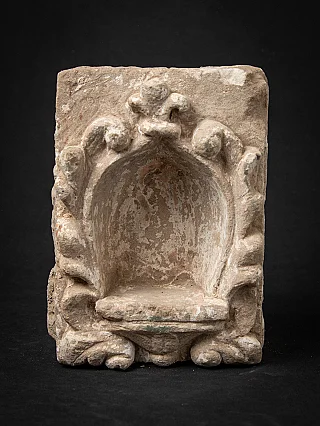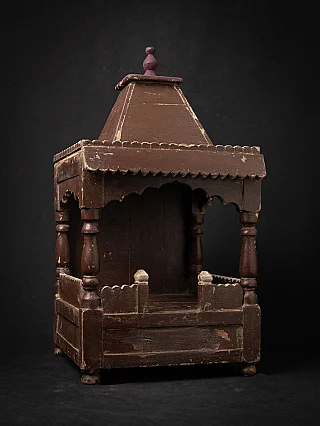Mahamuni Buddha Temple: a Buddhist Pilgrimage site in Burma

Mahamuni Buddha Temple is a major Buddhist pilgrimage site which is located in the southwest of Mandalay, Burma. As the statues of Buddha represents the Buddha himself, the temple is highly respected in Burma.
Legends behind the construction of Mahamuni Buddha statue
The construction of Mahamuni Buddha statue was possible when the Gautama Buddha accompanied by Ananda and his 500 disciples visited the capital city of Arakan, Dhanyawadi in 554 BCE. The purpose of the visit was to spread Buddhism and his teachings. Almost all of the high officials of Arakan Kingdom paid a homage to the Buddha. They all were highly inspired by his teachings and therefore requested to leave his image for people to worship.
The Buddha extended his time of departure. He then continued to meditate under Bodhi tree. During this period, Sakka and his assistant Vissakamma constructed a lifelike image of the Buddha. The materials were donated by the king and the people. After completion of his meditation, the Buddha looked at the statue and was very pleased.
History
It has been recorded that King Anawratha of Pagan attempted to move the Buddha statue to Pagan in the early 11th century CE but the attempt was not succeeded. Another attempt was made by the crown prince Thado Minsaw after the conquering the Kingdom of Mrauk U. He was a son of King Bodawpaya, sixth king of Burma of Konbaung dynasty. Prince Thado Minsaw successfully transported the Mahamuni Buddha Statue along with other valuable relics of the kingdom to the temple at Amarapura, the outskirts of the old capital of Mandalay. Since the statue was very large, they had to cut the statue into sections in order to transport the statue. Later the statue was reassembled and placed in the new temple which was later known as Mahamuni Buddha temple.
Features of Mahamuni Buddha Temple
The Main Buddha Temple
Early in the history, the temple can be reached through a brick paved road from the Royal Palace of King Bodawpaya. But now it has only remained of some of the brick. The central shrine where the Mahamuni Buddha statue is placed in a small chamber in the temple complex. The chamber has a roof covering made up of seven pyatthat. The ceiling has an ornate mosaic covering. The temple complex is supported by 252 gilded and carved columns which are painted beautifully.
Adjacent to the temple complex we can see many monasteries which follow Buddhism and teaching of Buddha.
Mahamuni Buddha Statue
As it is already mentioned the statue is housed in a small chamber with decorated ceilings. The statue is portrayed in Bhumisparsa Mudra. The right-hand touch the ground whereas left-hand rests in the lap with an upturned palm and the legs are crossed which is turned inwards. The statue is made up of bronze and has a weight of 6.5 tons. The statue has a height of 3.82 m which is placed on a pedestal of height 1.84 m. The shoulder measures 1.84 m and waist measures 2.9 m.
The male devotee pays a homage through applying gold leafs which have constantly changed the original form of the statue.
Khmer bronze statues
The temple's courtyard also contains 6 large bronze sculptures. These sculptures were collected from Angkor Wat in Cambodia in war loot in the 15th century. The sculptures are of a mythological three-headed elephant, called Airavata; three lions; two warrior statues. It is believed that the warrior statue has a healing capacity. Therefore, people rub their body part with the statue with the belief to cure the diseases.
Stone inscription at the site
In the southeastern corner of the temple courtyard, there is a large number of stone inscriptions in a long gallery which was collected by King Bodawpaya. It is believed that these inscriptions were collected from many regions of the country after invasions. Some of the inscriptions are made from gilded marble and sandstone.
Water tank and Museum
In the southeast direction of the temple, there is a large water tank. This tank happens to be the place for fish and turtles. The pilgrims who visit the temple fed fish and turtle with rice cakes.
Adjacent to the temple, there is Mahamuni Museum as well. This museum contains information about the Buddhism, life history of Buddha. The museum also displays a map that explains spread of Buddhism across Asia during last 25 centuries.
Share this page














































